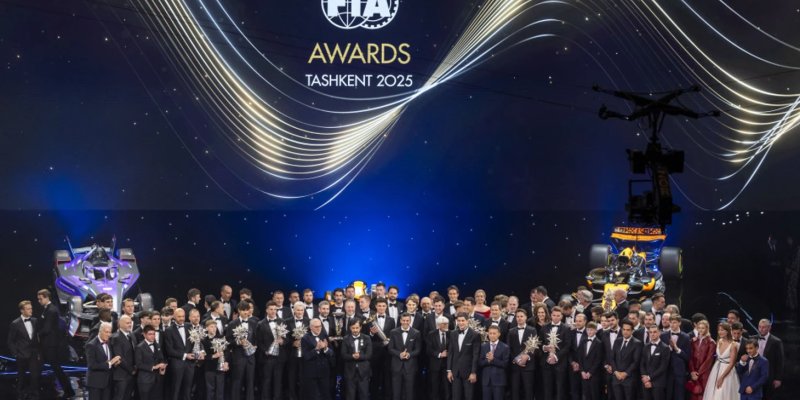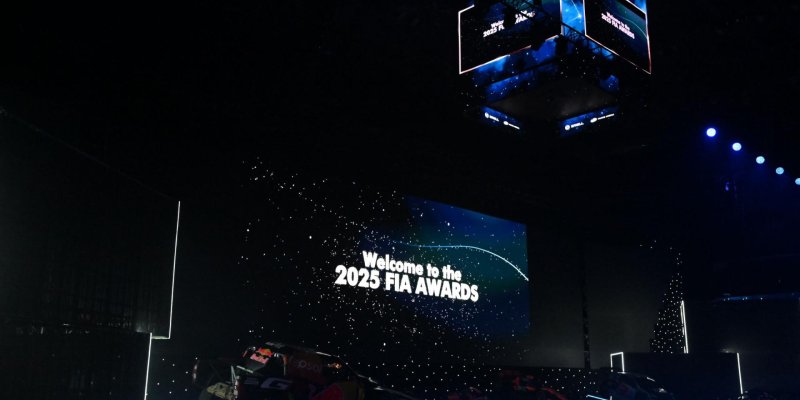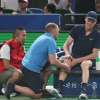
Baku can do magic without fireworks: exactly a day ago, Formula 1 power units were roaring here, and today it’s the regular city rhythm—horns, bus stops, pedestrians with coffee cups. Veteran Grand Prix photographer Kim Illman stayed in Azerbaijan’s capital to watch how the grand-motorsport scenery slips out of frame. The result: in less than 24 hours, the circuit turns back into a familiar city.
Pit Lane And Start/Finish Straight: Roar Replaced By Silence
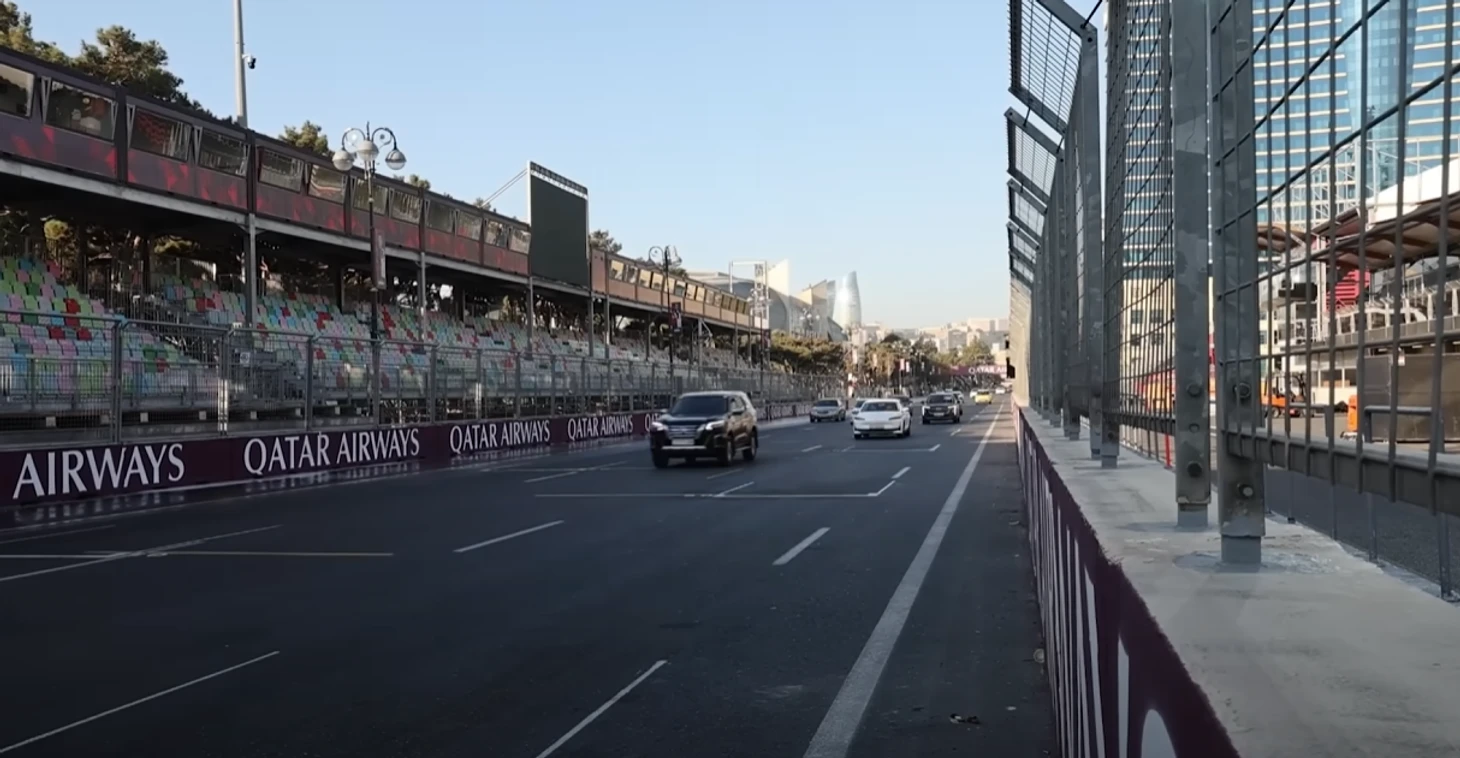
The race ended on Sunday around 17:00, and by Monday morning the main straight—the very start/finish zone—already looked “peaceful.” Traffic on the boulevard was restored, city routes returned to their lanes. The central grandstands were still in place, reminding of yesterday’s sell-out, but emotions had already given way to everyday routine.
Paddock And Pit Wall: The Last Line Of Defense
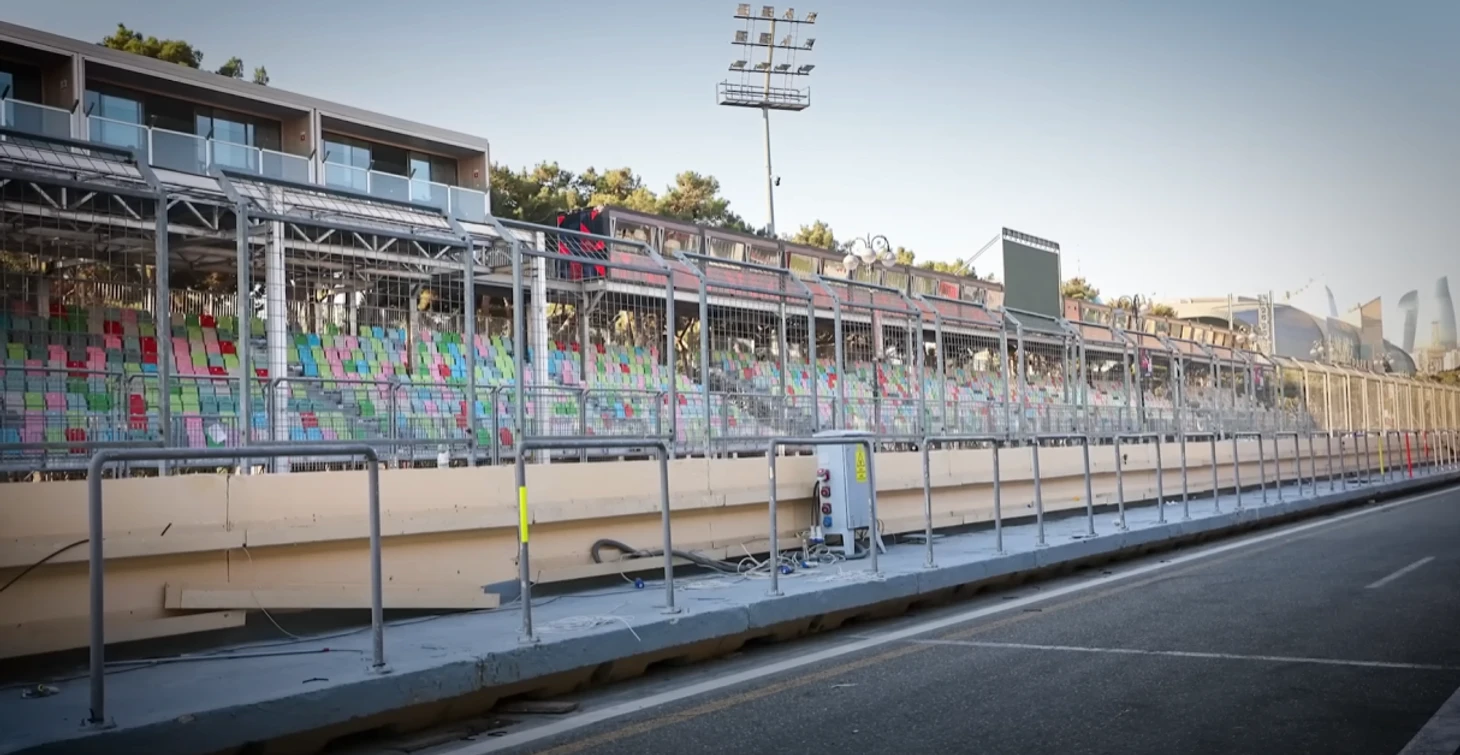
The barriers along the pit wall aren’t going anywhere yet—they’ll be removed only after the paddock is dismantled. This is the most “long-playing” area: it takes a couple of weeks to take apart the Grand Prix nerve center where team logistics and promo activities were concentrated throughout the weekend.
Grand Prix Logistics: Air, Sea, And Road Convoys
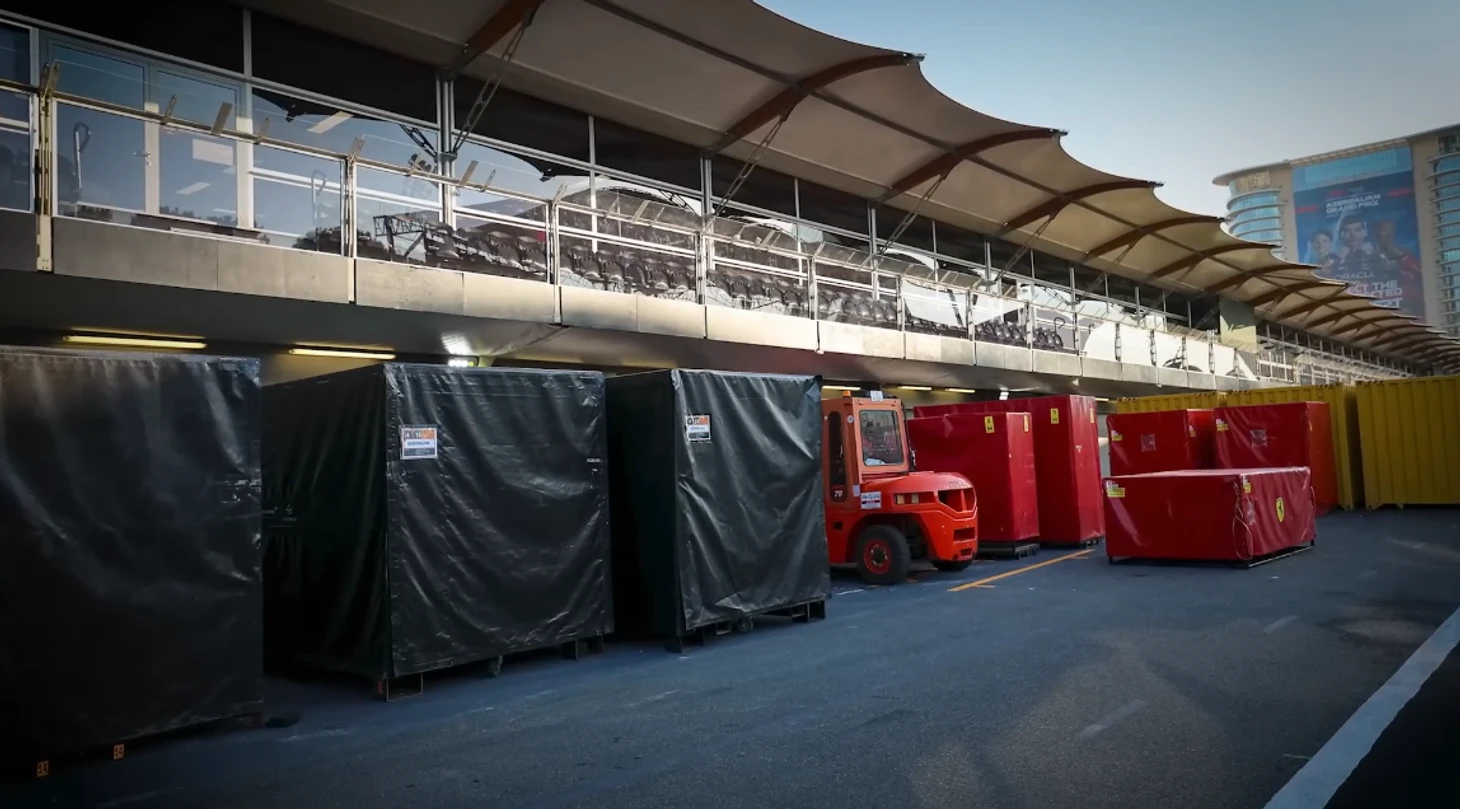
Team property leaves in branded containers. First into trucks, then to the airport. The most critical items will fly, but the bulk of equipment and furniture is more economical to ship by sea—either to the next circuit or straight back to team headquarters.
Garages And Hospitality: Life Switched Off
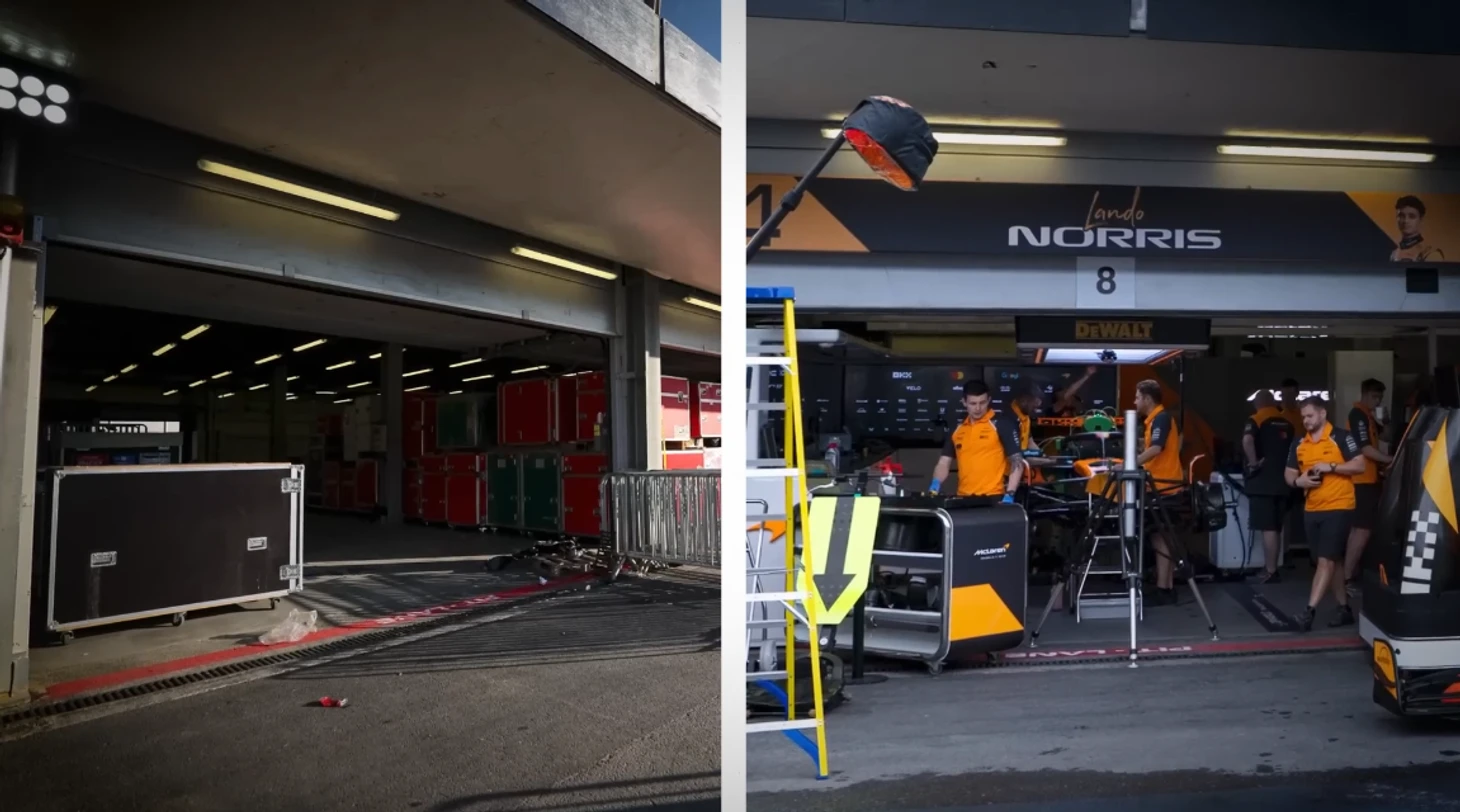
The nameplates above the bays have already been removed; only a few garages were open—yesterday Lando Norris’s car stood here, and today it’s empty and unusually quiet. In hospitality, only the “skeletons” of catering remain: large equipment has been packed and sent to warehouses, and a stove still sitting in the kitchen is the last touch before a full move-out.
Fan Zones And Entrances: Traces Of A Big Party
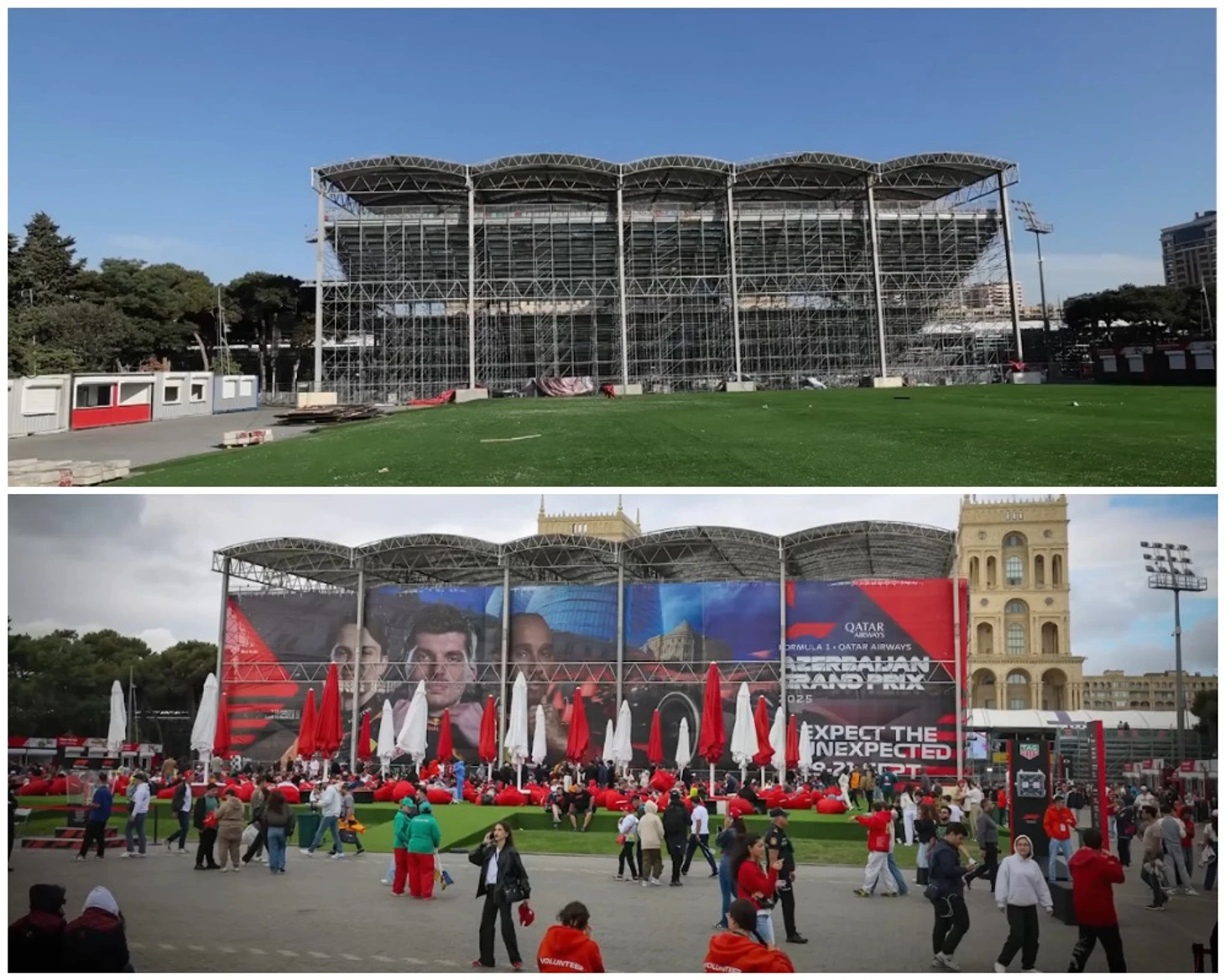
The fan zone opposite the paddock slimmed down instantly: the posters are gone, but soft beanbag chairs still lie on the grass—as if guests had just stood up to applaud. The main entrance to the paddock, used by drivers, guests, and journalists, lasted a bit longer, but the four turnstiles were dismantled about an hour after the finish. At the Hilton hotel, which hosted the media center, the rooms are returning to a “civilian” layout.
The Bridge At Turn 1: Seasonal Architecture
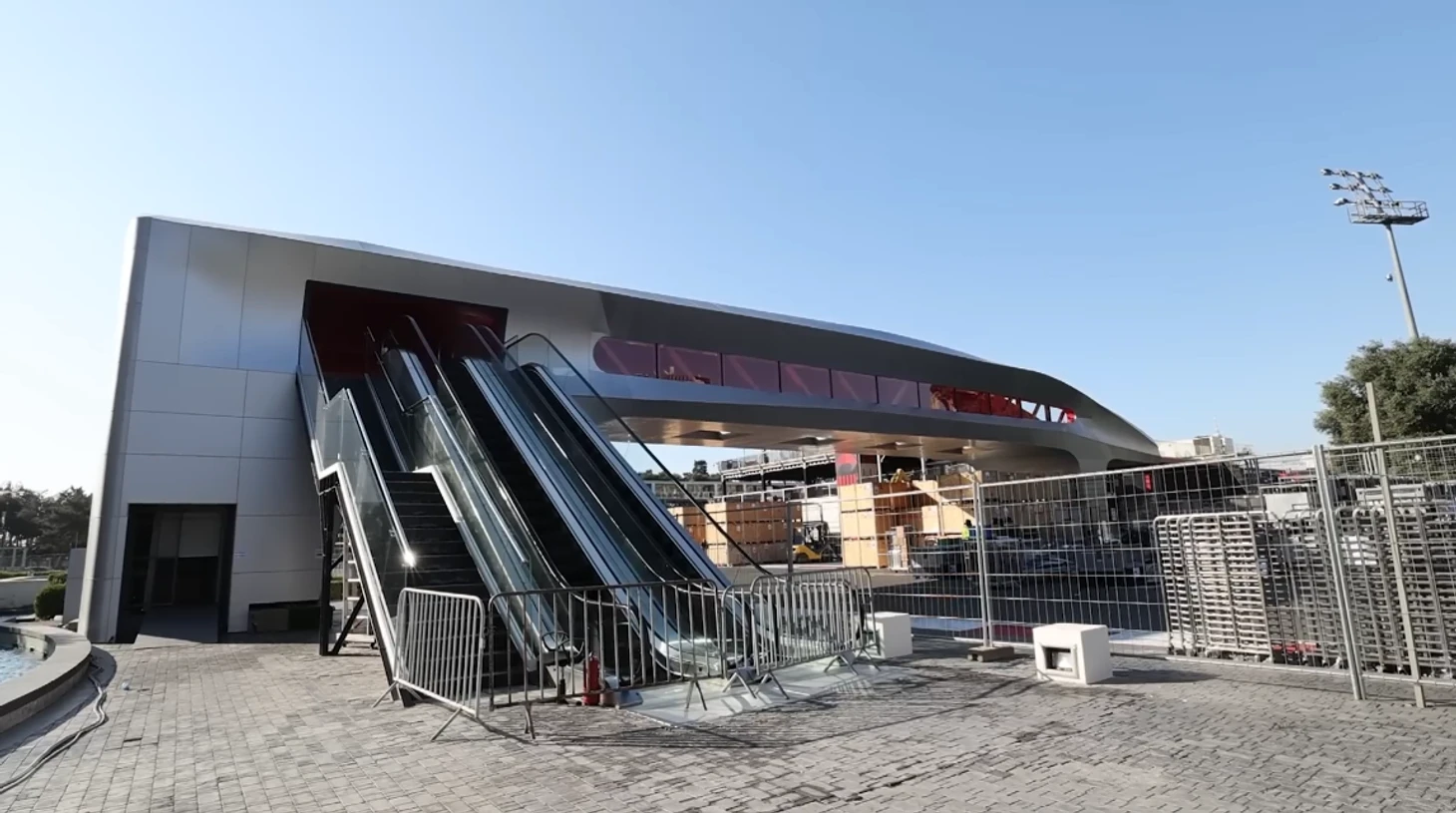
During the event, a temporary pedestrian bridge is erected here, spanning the first corner. After the weekend it’s closed—the city doesn’t need it in the off-season. Inside, it looks bright red, as if the creator were a Ferrari fan.
Narrow Left And DRS: As The City Erases The Traces
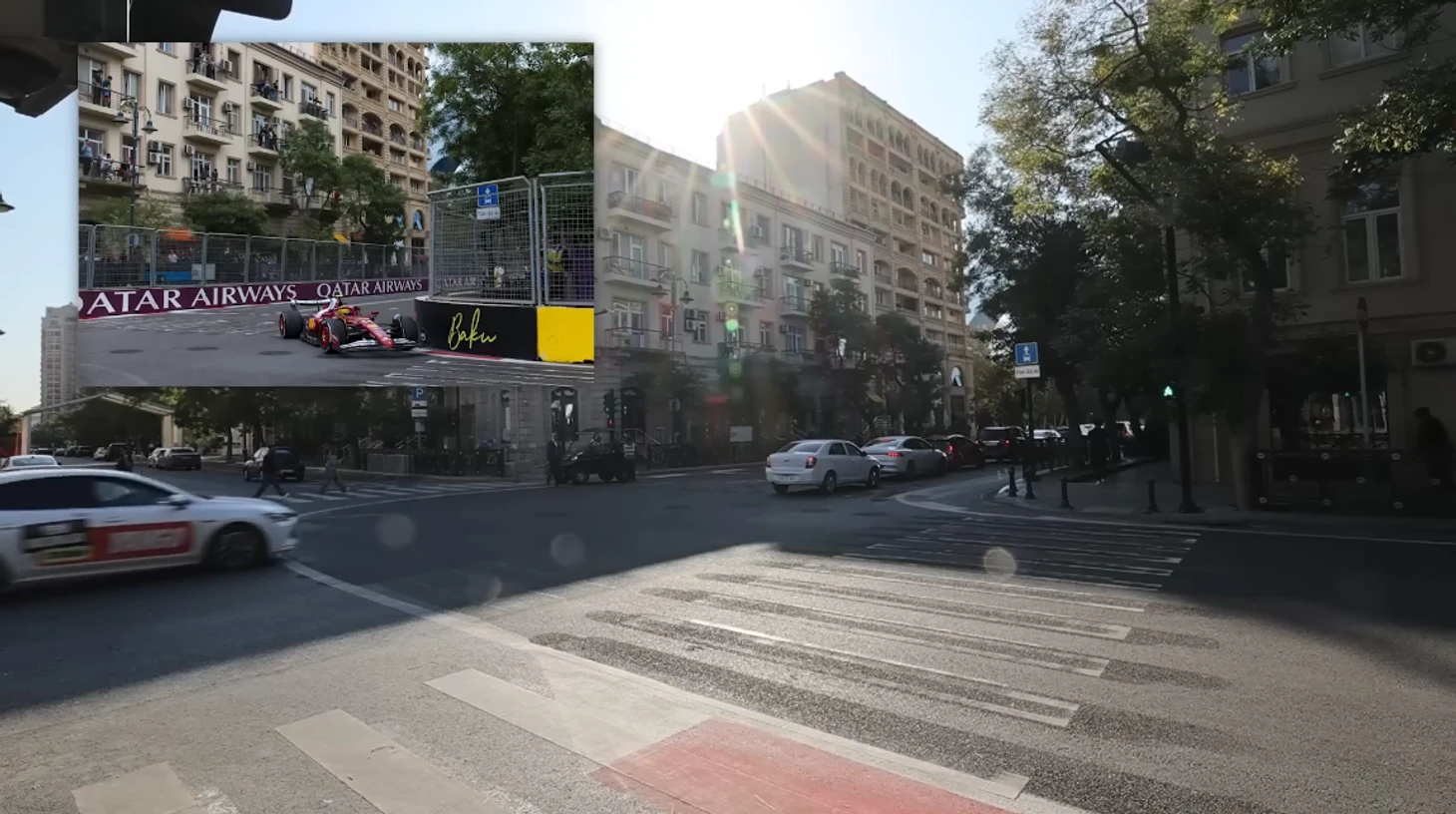
It’s hard to recognize Turn 2—the narrow, steep left-hander that just yesterday was lined with concrete blocks and wire fencing. Now the curbs are open, and of the racing landscape only a few markings remain: the first DRS activation zone began just a dozen meters from here—today that’s recalled only by memory.
From T3 To T4: Shards Of Memory On The Asphalt
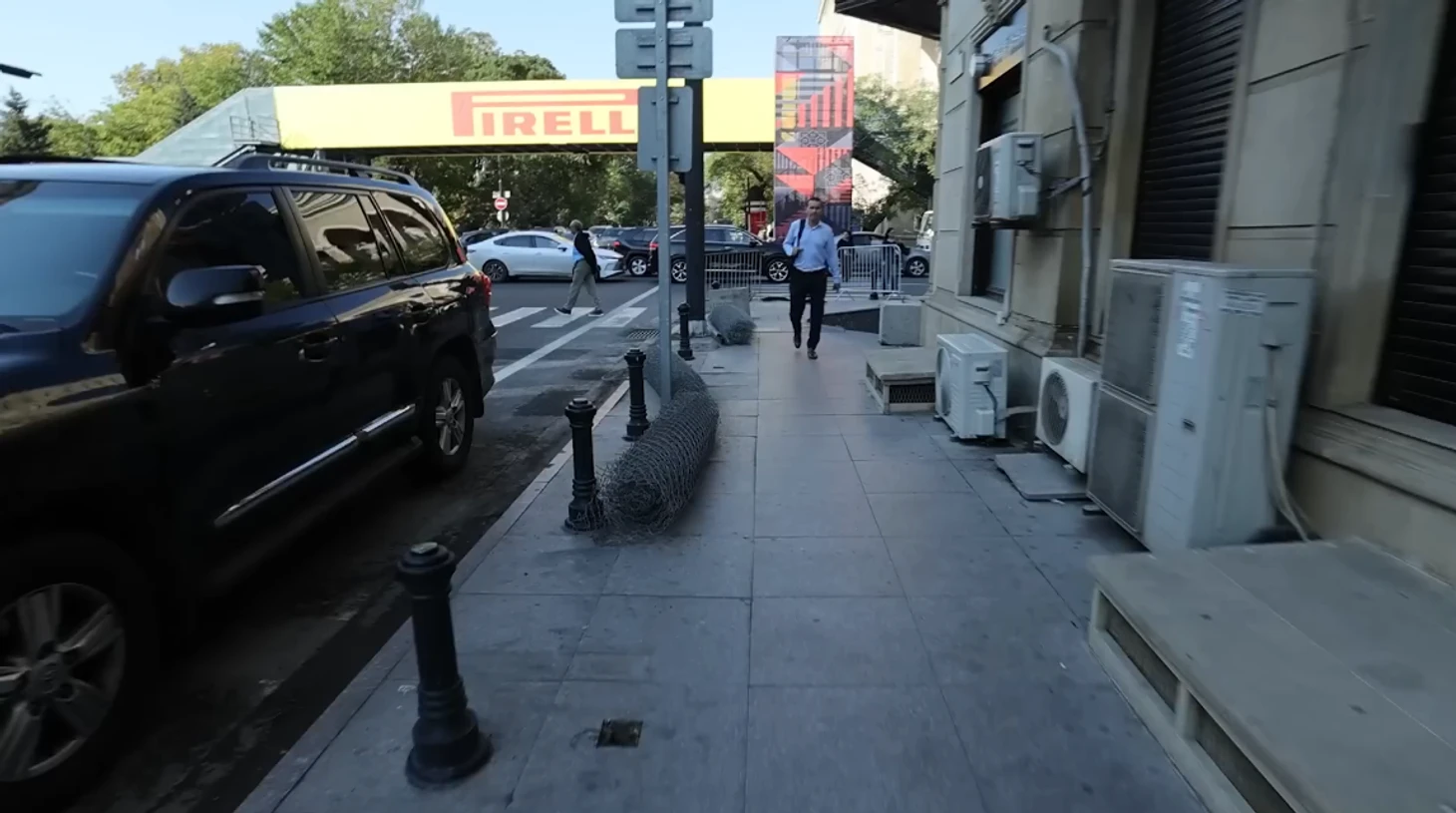
On the way to Turn 3, your eye catches neatly folded wire mesh on the asphalt—the last greeting from the marshals. The red-and-white road markings are still visible; Turn 3 is easy to recognize, and after Turn 4 there’s that very street pocket used during the race as an escape road for those who braked too late.
The Fifth Focal Point: Piastri’s Trace

Oscar Piastri crashed at Turn 5. After the incident he walked about 40 meters toward the outside at corner exit and sat there for around twenty laps—the area was tidied up quickly, as if nothing had disturbed the smoothness of the route. In the background is an Emporio Armani boutique that likely didn’t operate on the race weekend.
The Fortress, “Eight,” And The Silken Thread Of The Old City
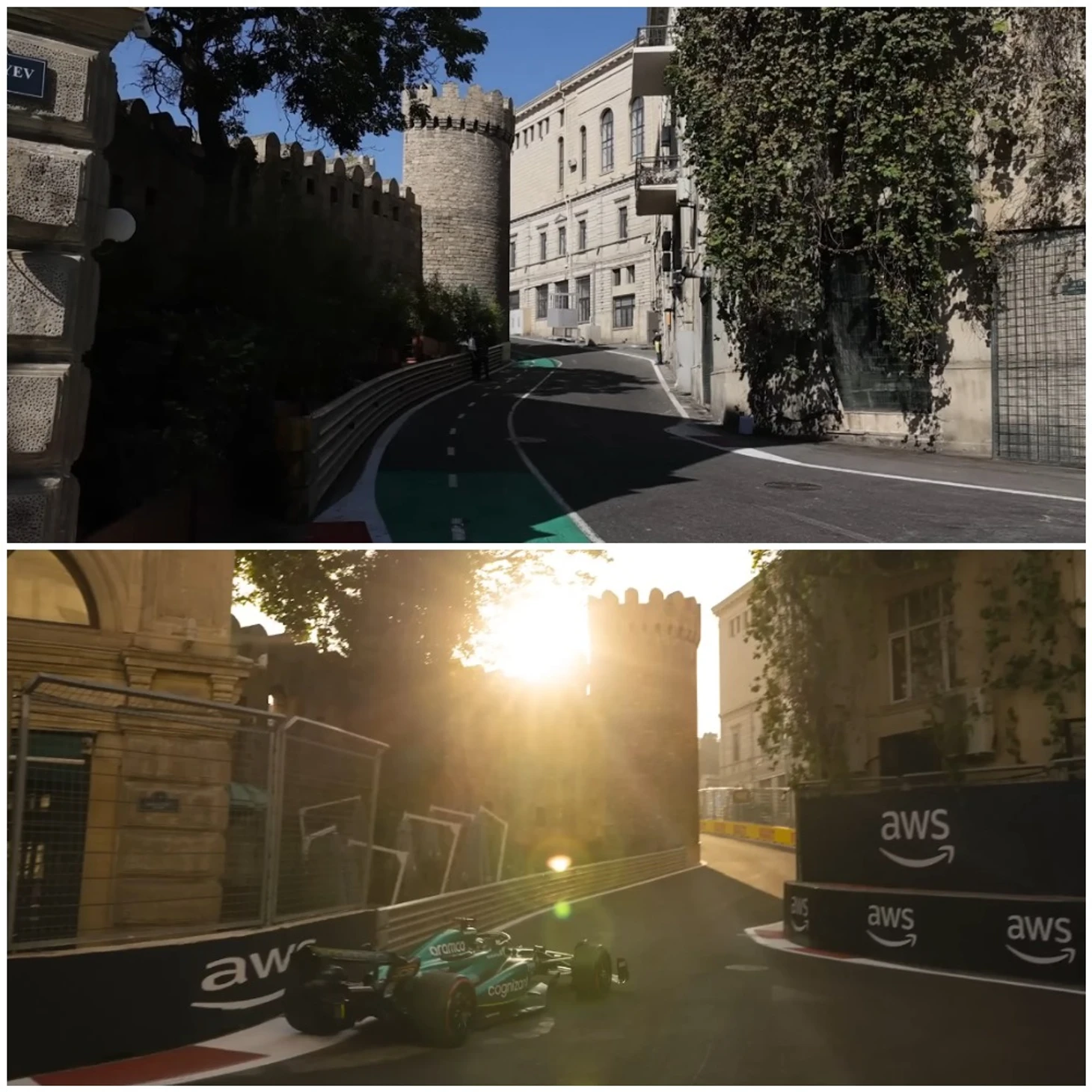
The straight after Turn 6 narrows toward Turn 7; to the right in the distance you can see the famous fortress. Not a single barrier left—just the city. And then comes the event’s calling card: Turn 8 by the walls, which on TV seems wider than it really is. The race has a day-to-day “flip side” too: the barriers at that very Turn 8 block the main entrance to the Sheki Sweet Home pastry shop, but the owners have an alternative entrance from the second floor—and from above there’s a gorgeous view of the drivers’ lines. To protect the windows during the weekend, the organizers set up sturdy metal mesh—prudent and tidy.
Spots For The Shot: Ladders Gone, Mood Remains
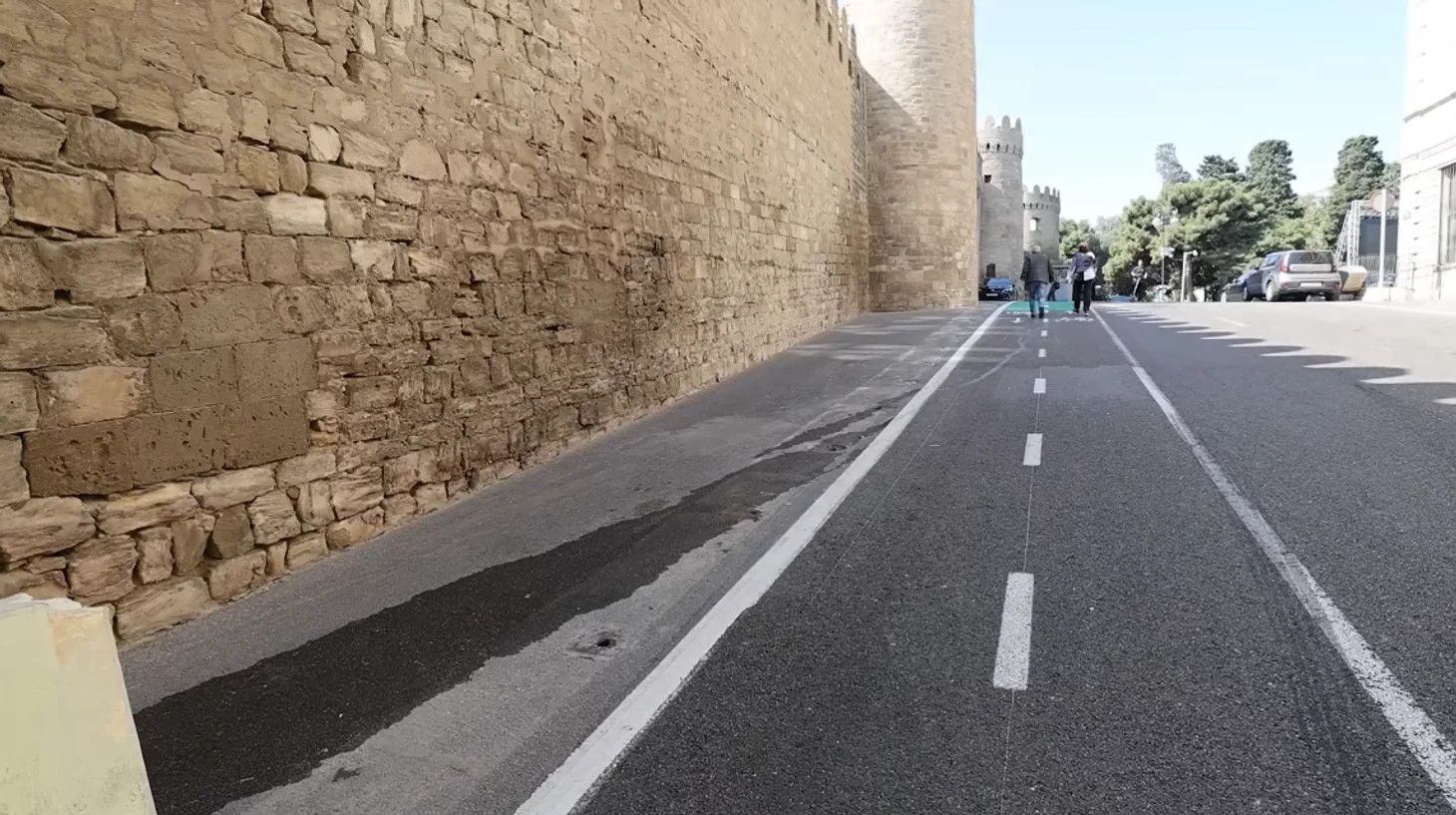
Along the fortress wall, nothing reminds you there was a race here recently. Except for one stone at the corner—it’s there 24/7/365, without shifts or breaks. For photographers, a temporary ladder was set up in the inner courtyard so they could climb up and shoot unique angles—now there’s no trace of it. From Turn 12 the view toward the Turn 10–11 sequence is back to normal—urban rather than racing.
Turn 15: Where Even Stars Get It Wrong
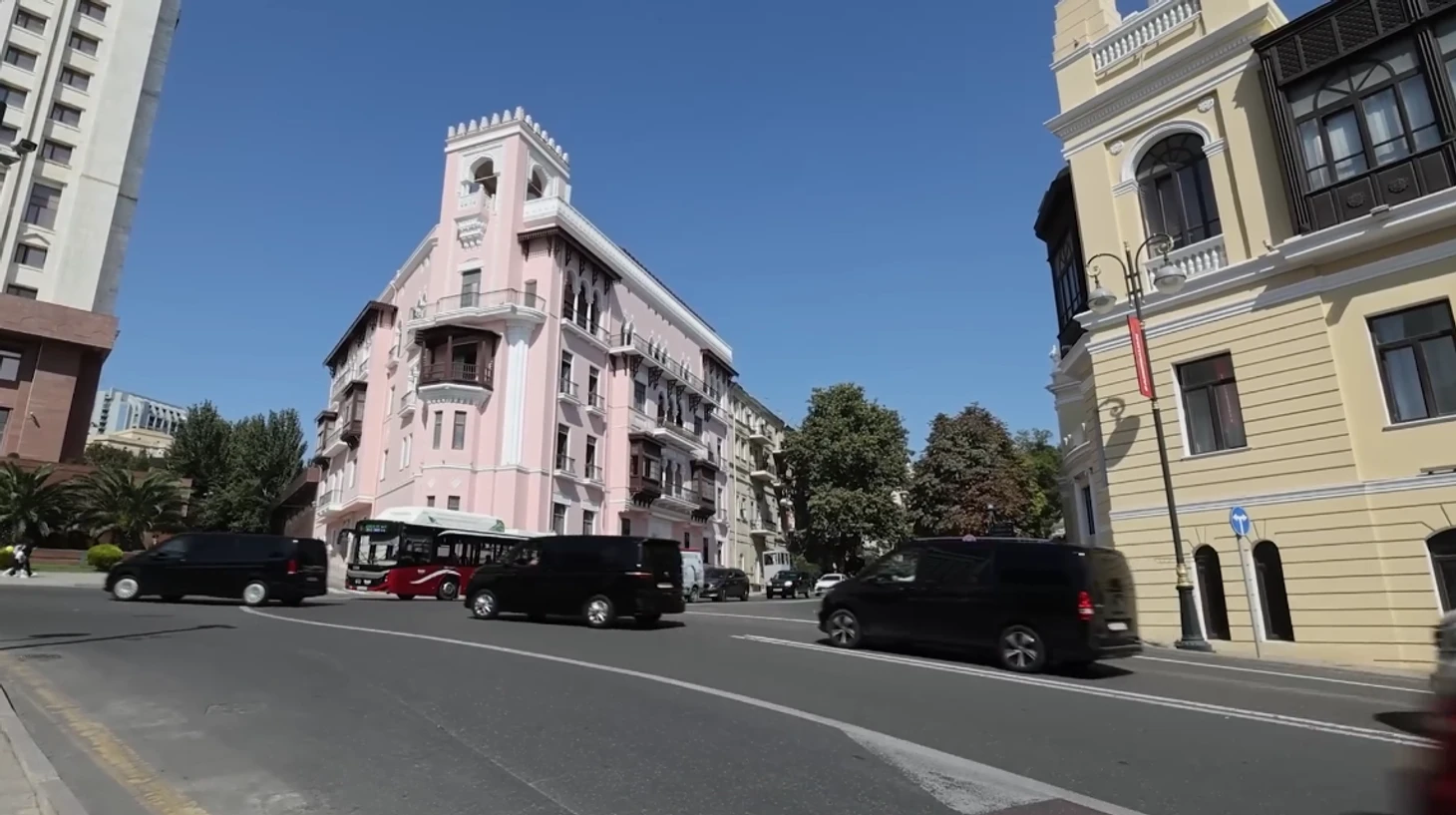
Another recognizable angle is Turn 15, where Charles Leclerc once zeroed out his chances of qualifying higher than tenth. The section again belongs to everyday drivers: no TecPro barriers, no marshal posts—just a traffic light and an oncoming lane.
The People Who Speed Up Time, And Baku’s Cats
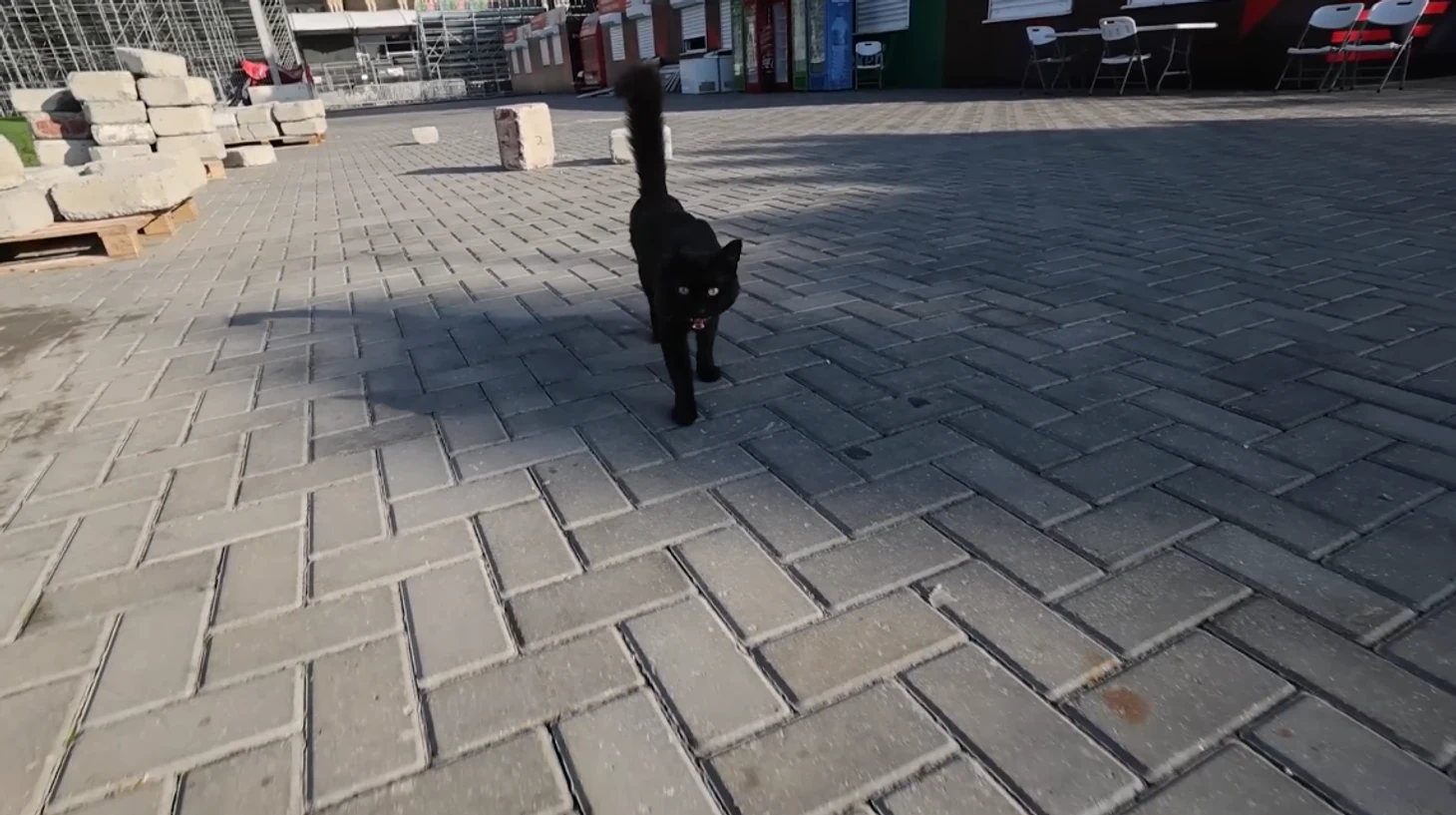
The secret of the quick restoration is the work of the invisible heroes in orange vests. Their job is to remove the traces of a huge event so that locals aren’t bothered by barriers, temporary signs, or plastic cones. And of course, nowhere without Baku’s famous cats—they’re a symbol of the peaceful life that inevitably returns after any loud weekend.
A Decade Of Practice And A Horizon To 2030
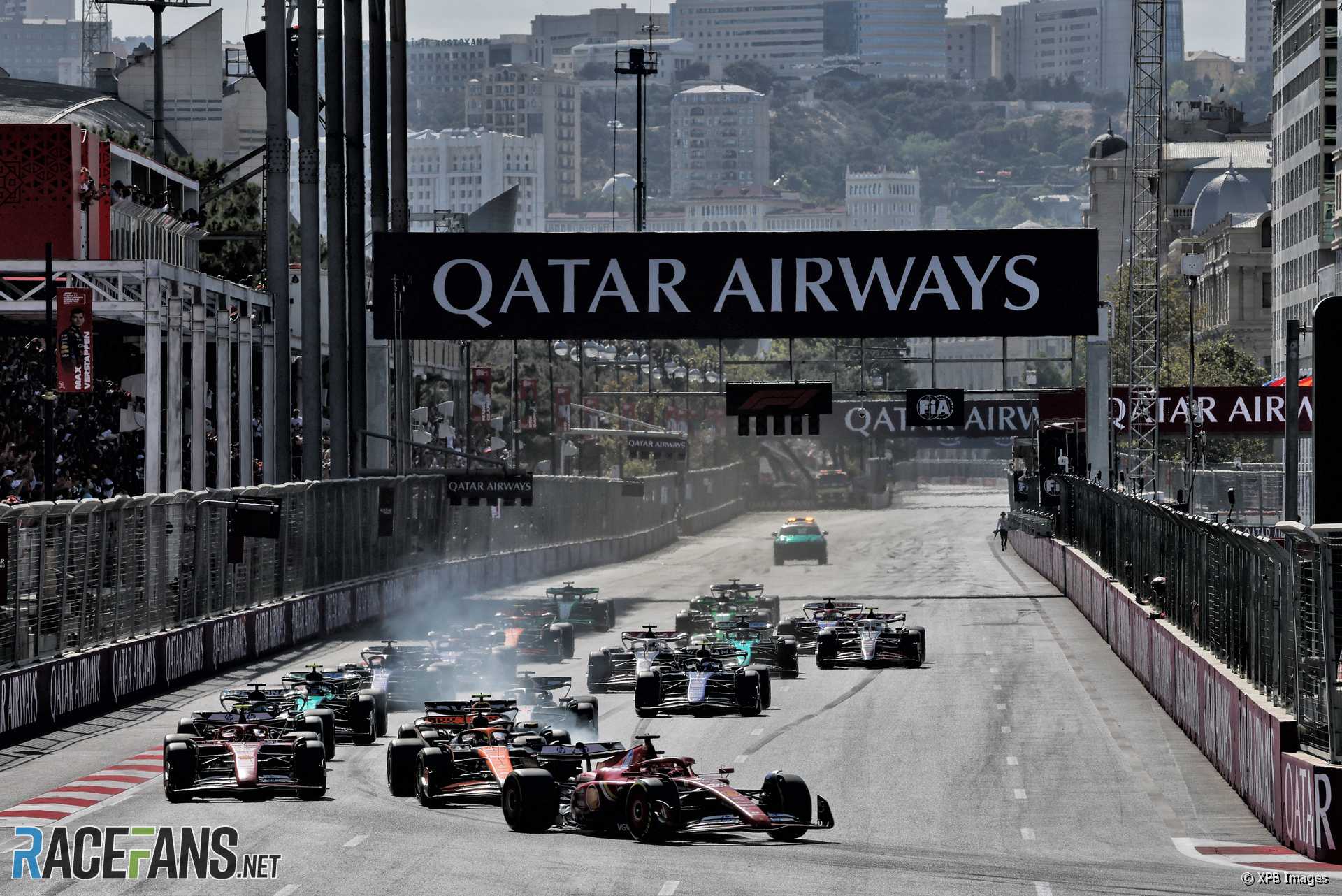
Baku has been honing its “rapid teardown” for ten years and will remain on the calendar at least until 2030. Each time the scale of the task amazes: dismantling cozy Monaco with its shorter configuration is one thing; putting back in order an almost six-kilometer giant that links old quarters with new boulevards is quite another. Here they’ve learned to wrap up the party as swiftly as they stage it: Sunday—the finish; Monday—the city again.

